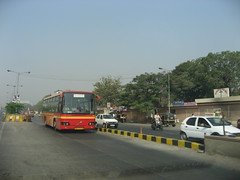
One option for a BRTS in Bangalore could be from Indiranagar/Domlur to E-City after the airport shifts and the elevated expressway comes up.
Once the airport shifts, the pressure on the IRR will come down. Once the elevated expressway comes up one lane can be dedicated to the BRTS on Hosur Road (at the bottom).









